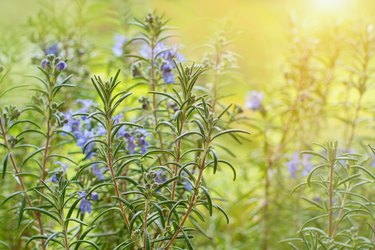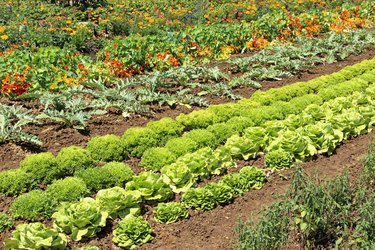

When you think of the time to plant a garden, August may not be the first month that comes to mind. Late summer is a hot time of the year, and don't plants prefer the cool spring air? Then, just on the other side of the heat comes autumn, when the leaves fall to the ground, and freezes and frosts are just around the corner.
So, are there crops that can withstand the heat and mature before the first frost? The answer is a resounding yes, and I'm here to tell you about them.
Video of the Day
Video of the Day
Best Late-Summer Vegetables to Plant
Leafy Greens | Arugula |
Mâche (Lamb's lettuce) | |
Mustard Greens | |
Root Vegetables | Beets |
Carrots | |
Potatoes | |
Cruciferous Vegetables | Cauliflower |
Broccoli | |
Kale | |
Legumes | Peas |
Snap Peas | |
Beans | |
Herbs | Basil |
Rosemary |
Leafy Greens
I love leafy greens; big salads are my absolute favorite meals. And having spent so many years in France, I always try to grow something more exotic than regular lettuce in my garden. Some greens may bolt in the summer heat, but there are three leafy greens perfect for August planting that will be ready to harvest well before the first frost.
Arugula
Arugula (Eruca sativa) is one of those greens you see on gourmet menus, yet it's so easy to grow in your home garden. In France, it's called roquette, and people love its tangy, peppery, almost mustardy flavor.
Arugula is native to warm regions of Europe: from southern Italy, along the Mediterranean, and through Turkey. That means the hot, late-summer weather suits it perfectly. Seed in mid-August and expect to harvest young leaves in late September. The crop can shrug off a light frost.
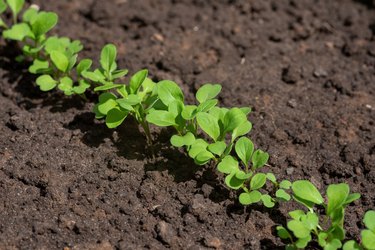
Mâche
I also discovered mâche (Valerianella locusta) in France, where it has been a favorite green for centuries. It is known as mâche in Europe but is often called lamb's lettuce in the United States.
This mild green with a nutty flavor grows in a rosette. The leaves are delicious raw in salads or cooked in soups or sauteed dishes. Sow the seeds in your garden in August as long as the soil temperature is no higher than 70 degrees. Harvest the leaves on a "cut and come again" basis, starting a month or so after planting.

Mustard Greens
The mustard plant (Brassica spp.) does double duty: Gardeners can eat the delicious foliage as mustard leaves and then use the seeds to make mustard. Start this cool-weather crop in August by sowing seeds in a full-sun location and then watch it come into its own as summer turns to fall.
It will take six weeks for mustard greens to fully mature, but you can start using the leaves as soon as they are 6 inches long. However, harvesting mustard after the first frost is perfectly fine sine their flavor is sweeter after a light frost.
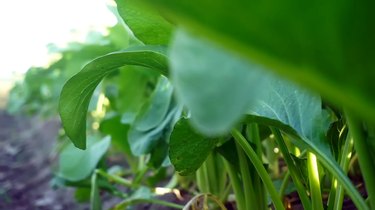
Root Vegetables
Root vegetables grow underground out of the direct sun. This makes them more tolerant of hot August weather than above-ground crops. In addition, the warmer soil helps the seeds germinate faster and promotes root development. Finally, the cool weather in autumn and even light frosts and freezes sweeten the taste and make these vegetables more flavorful.
Beets
Beets (Beta vulgaris) offer a big bang for the buck; both the beet root and the leaves are edible. These fast-growing root vegetables tolerate almost any growing conditions, although they do best in well-draining soil and a full-sun site. These delicious veggies take between 50 and 70 days from seed to harvest. They taste best when they reach 1 to 3 inches in diameter.
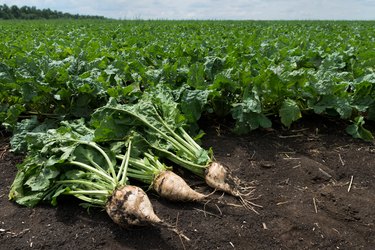
Carrots
Your ordinary grocery-store carrot (Daucus carota) is orange, but the "new orange" might be red, yellow, or purple. Carrots are great for August planting, and why not try a different color or type of carrot — maybe something round or super thin? Or you might just go for maximum flavor with late-season carrot cultivars like Sugarsnax and Nantes.
Carrot seeds germinate well in the warm soil of late summer. Be sure to plant them shallowly and keep the soil watered. You can expect to be harvesting this crop in about 60 days.

Potatoes
The variety of potatoes (Solanum tuberosum) will astound you since there are over a hundred different kinds. You can find them in all different sizes and colors, so pick a variety that grows well in your area.
Planting potatoes does not involve seeds per se but seed potatoes, which are generally sold in bags. You can plant these in August as long as the soil temperature is at least 55 degrees Fahrenheit during the day and 45 degrees at night. First, let the seed potatoes sprout and then plant them in trenches, holes, straw, or containers. Potatoes planted in August will mature in fall.
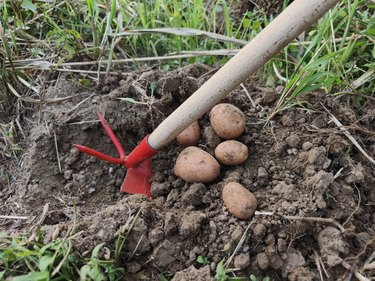
Cruciferous Vegetables
Most gardeners have heard that the cruciferous family of vegetables is really good for your health and particularly good if grown organically in your own garden. Experts testify to their cancer-fighting compounds. Do you know which veggies are cruciferous? Here are three that are great for late-season gardens.
Cauliflower
Cauliflower is currently trending — yes, we live in a society where veggies come in and out of fashion — but many gardeners appreciated this veggie even when it wasn't the new "it" veggie. It's great roasted or in soups. You can add cauliflower to your August garden as long as you follow a few guidelines.
While growing cauliflower is usually associated with cooler temperatures — it is a cool-weather crop, after all — this flexible vegetable can withstand the August heat in cooler areas of the country. Select heat-tolerant cauliflower varieties, like Snow Crown, Cheddar, and Graffiti, which perform better in late-summer plantings. Plant them in an area of the garden that gets afternoon shade. Expect a harvest in 70 to 90 days.
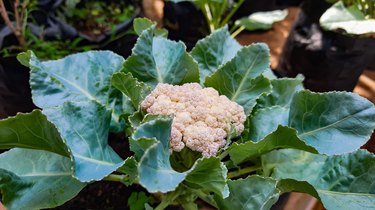
Broccoli
Broccoli can take several months to go from seed to maturity. Get this healthy and delicious veggie planted in early August for an October or November harvest.
This is a win-win for the crop since broccoli develops well in warm soil and then flowers and matures in the cooler season. Broccolini varieties are also great for summer plantings.
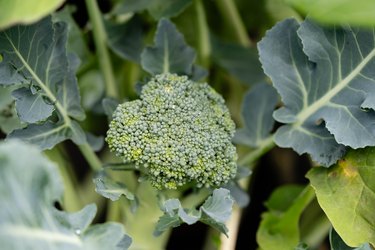
Kale
Kale (Brassica oleracea var. acephala) is a nutritional powerhouse and a gift that keeps on giving in the garden. It does well when planted in late summer.
This hardy green can be sown directly into well-draining soil in a full-sun location. Seeds germinate well in warm soil, but the plant tastes best when it matures in cooler weather. Light frosts only enhance its flavor. Expect to start harvesting in 50 to 70 days.
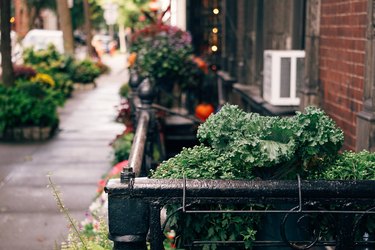
Legumes
Peas and beans are both legumes. These are great vegetables for a late-summer garden as long as you wait until the very hottest part of the summer has passed to sow seeds. They require little maintenance and produce pods into winter.
Peas
Peas (Pisum sativum) are cool-weather legumes great for seeding in a late-summer garden near a fence or trellis. You can also use transplants if you prefer, but the seeds germinate quickly and take 60 to 70 days to mature. Classic peas are the sweet pea variety, also called English peas (Pisum sativum L. ssp. sativum). You can only eat the peas since the pods are inedible. This is where shelling peas comes into the picture.
Start your sweet pea plants so that they are well established at least a few months before the first frost date. Planted in August, they will yield a harvest in late September or so. Most varieties are ready to harvest 60 to 70 days after seeding.
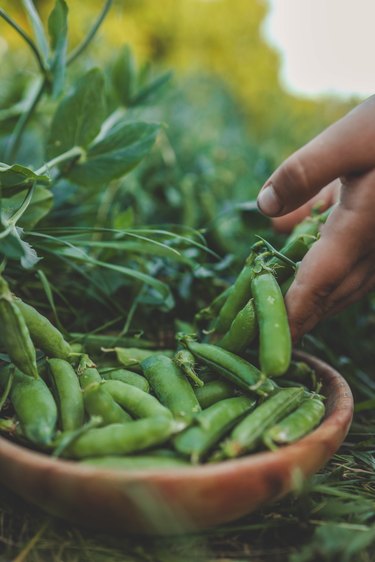
Snap Peas
Snap peas (Pisum sativum var. macrocarpon ser. cv.) look like pea pods, but you can eat the crisp pods whole. They are truly delightful in salads and stir-fries, and yes, they are good choices for late-summer planting. Select a variety that matures quickly.
Snap peas grow quite quickly, and the time from planting until harvest can be completed in as little as two months. Plant them some eight weeks before the average first frost date in your region.
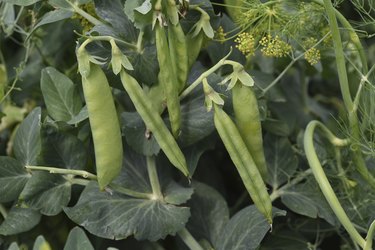
Beans
Did you forget to sow green beans (Phaseolus vulgaris) in spring or early summer? No problem! Sow those seeds in mid to late summer and extend your harvest through fall. You can plant beans in your August garden, ideally one of the bush varieties since they are quick growers. But all kinds of beans planted in early August are likely to produce a bumper crop.
Bush bean varieties like French Filet and Jade mature in under 60 days. This means an August planting should be ready to pick by October.
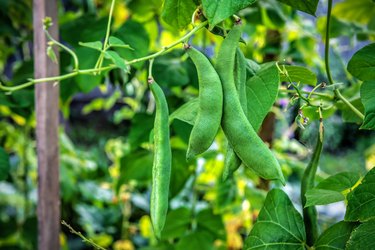
Bonus: Herbs for August
One herb that does well in a late-summer planting is basil, an Italian favorite. It's a heat-tolerant, sun-loving herb that will thrive under the late summer sun. This Italian classic (as well as its Thai and holy basil relatives) will take off like lightning when seeded in August.
Then, there is rosemary, a perennial herb that thrives in the hot, dry Mediterranean weather. Transplant rosemary starts in August so they can establish before cold weather arrives. You'll have rosemary to cook with for years to come.
